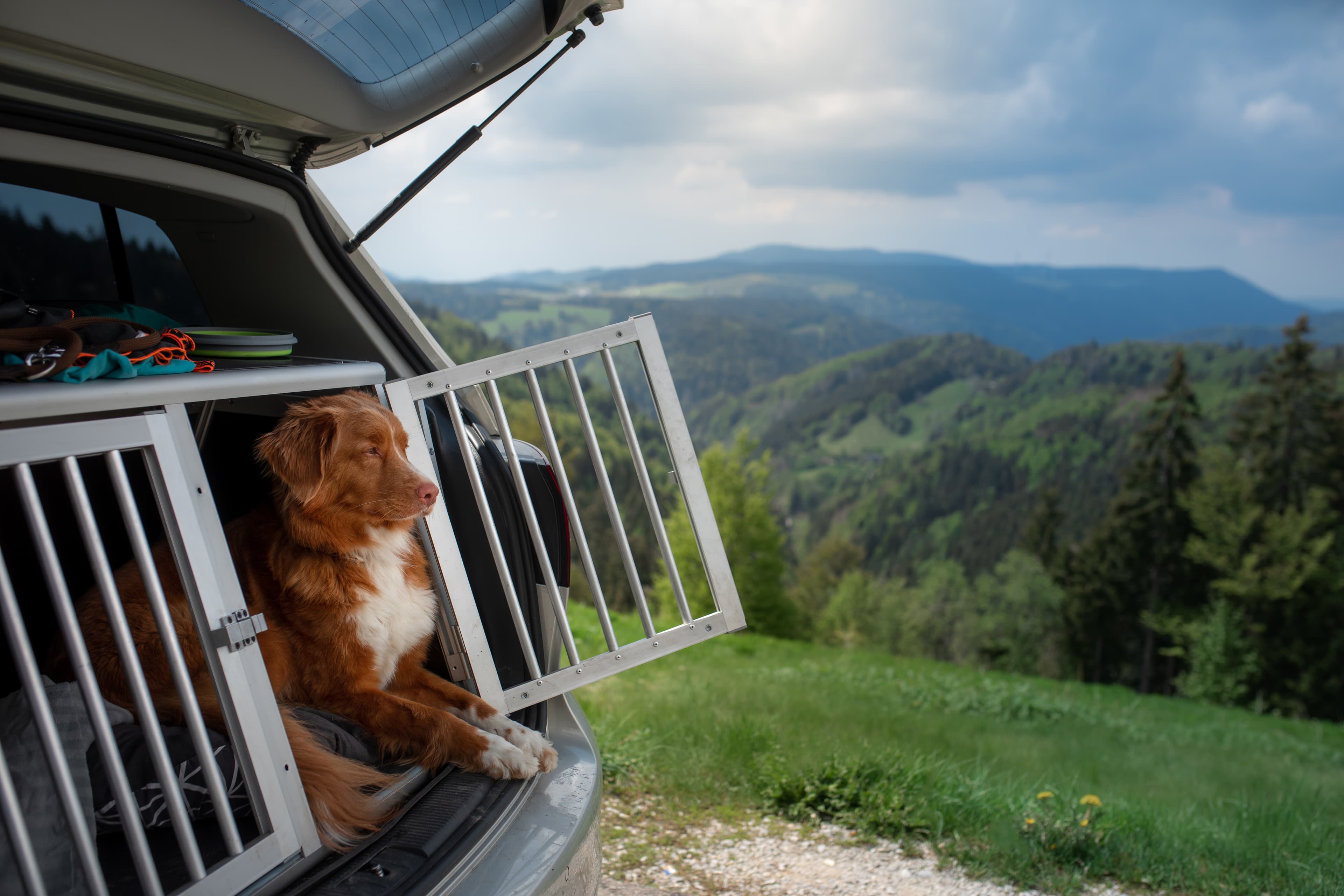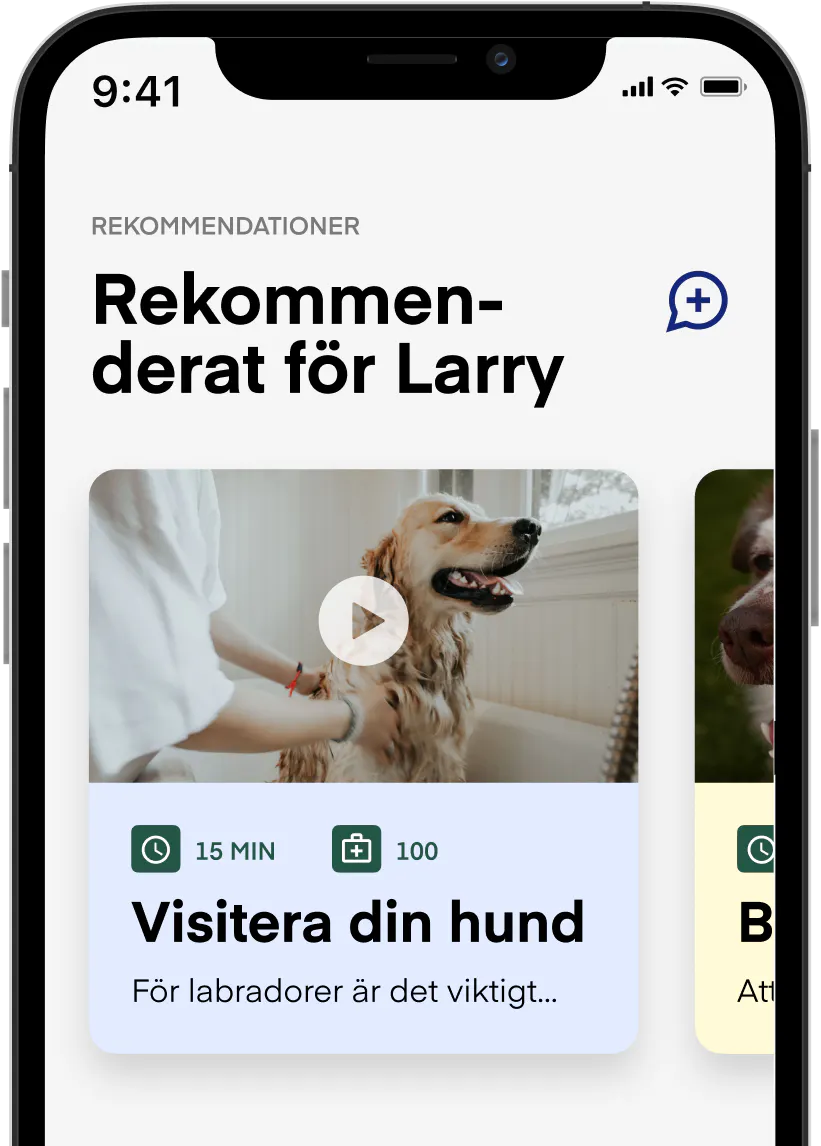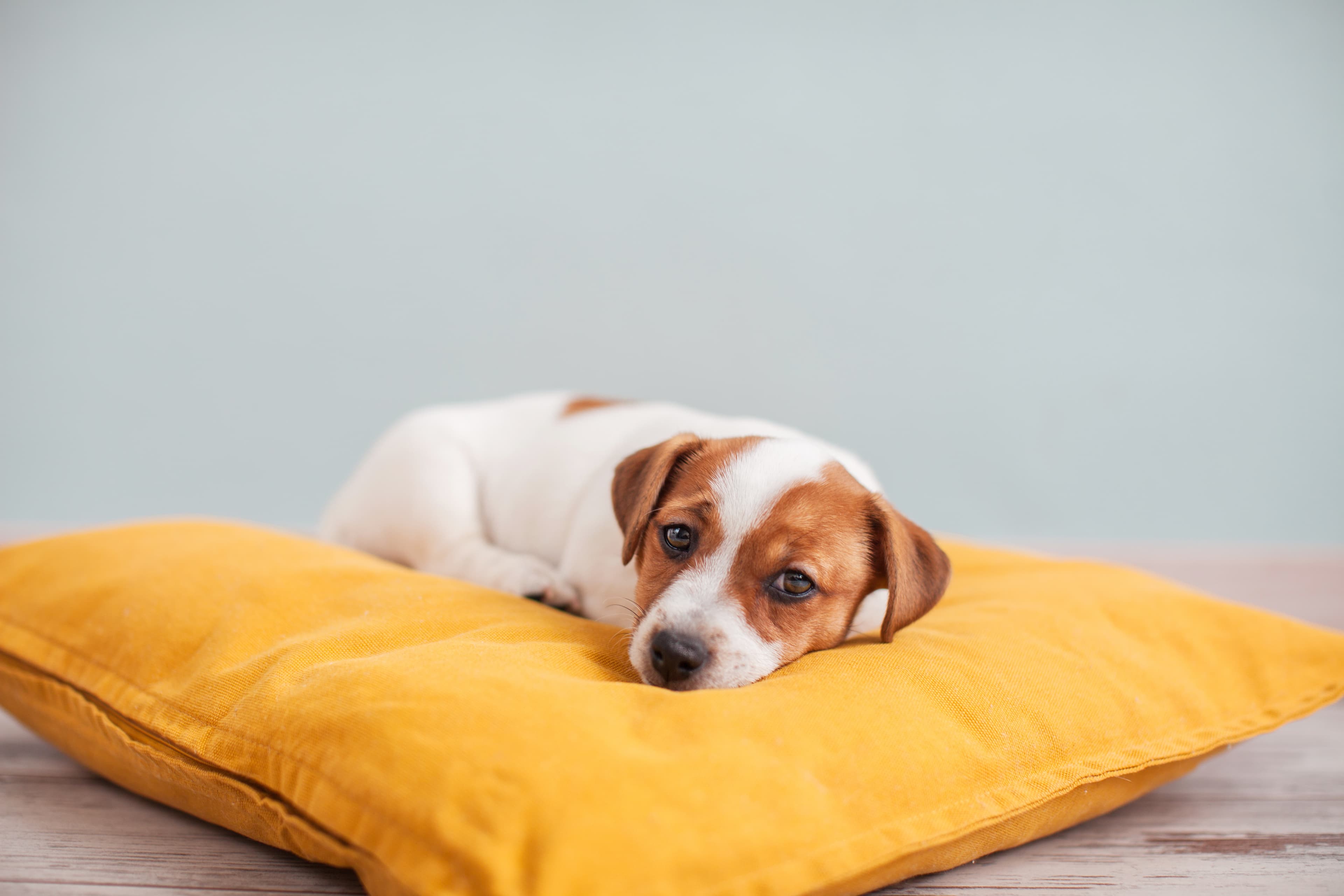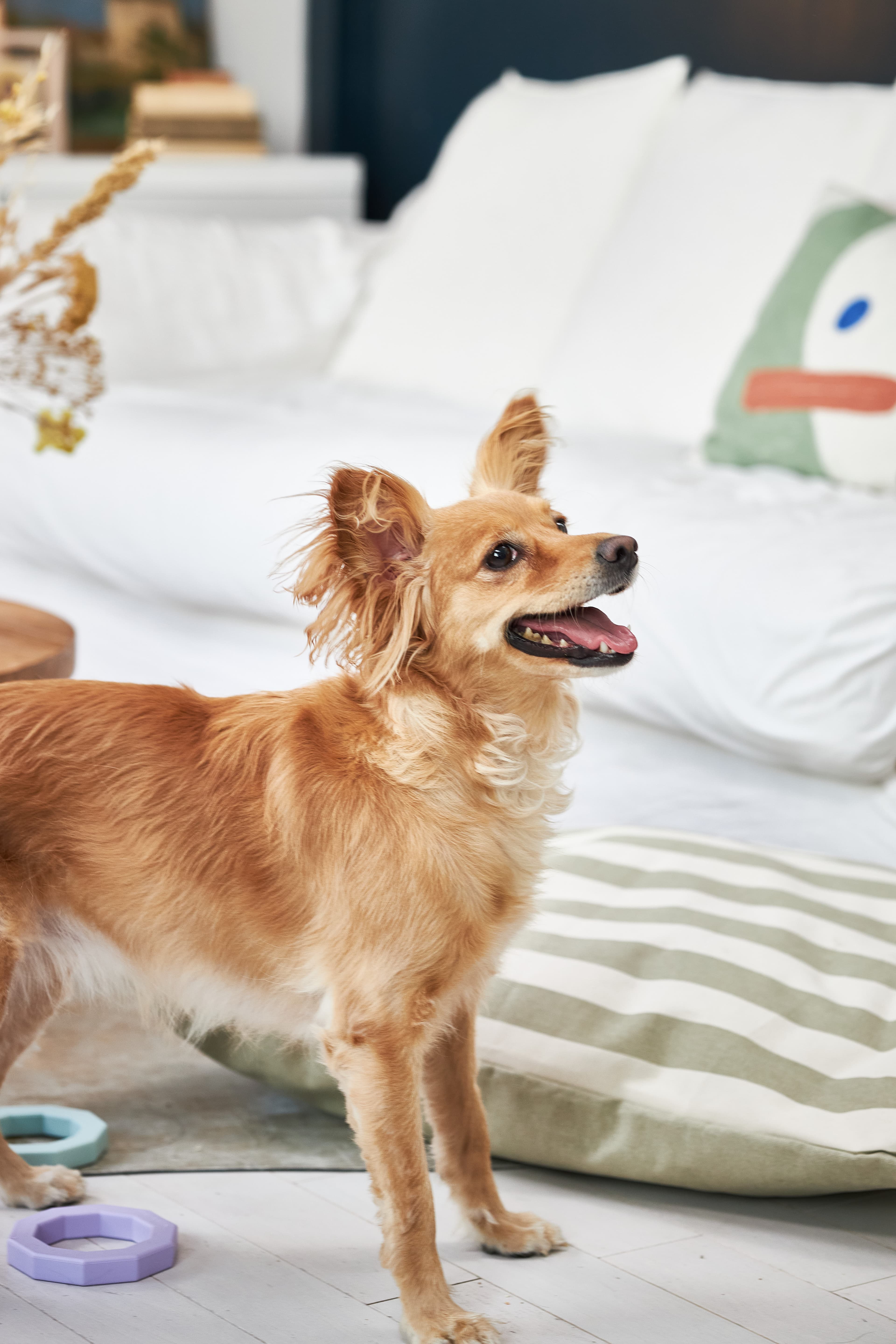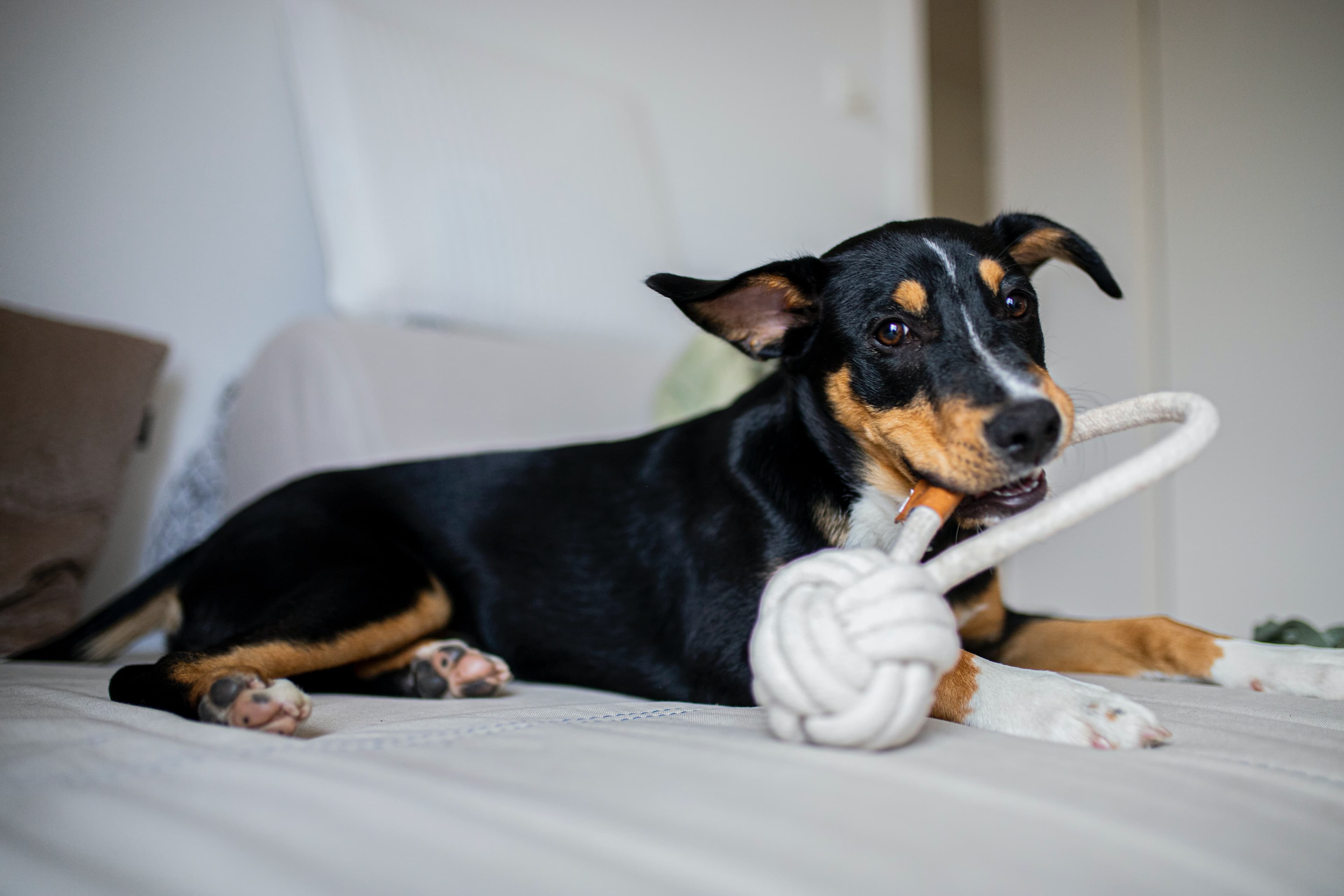Help your dog overcome his fear of being in a car
By far the most common cause of driving discomfort is fear and is unfortunately often mistaken for motion sickness. These dogs can also become nauseous, drool and vomit and are often anxious and panting for most of the journey. In severe cases, they may even urinate and defecate during the drive. This fear does not grow away on its own and requires regular training. A car-shy dog may often shy away from getting into the car, may sit and shiver and be reluctant to accept treats.
When training for car fear, think of it like this
It can't be mentioned too many times that it's always the dog that sets the pace when you're training for different types of fears. Therefore, pay attention to what your dog is doing and how it reacts to your cues to see if the dog is relaxed in the situation.
Step 1, the dog gets used to being around the car
Start by getting the dog used to being around the car. You then walk towards the car and when the dog stops, it may be far away from the car or right at the tailgate, you stop there. Give the dog some treats and practise a few tricks before moving away from the car again. Always take it on the dog's terms and listen to the dog's signals: if the dog doesn't take a treat, you are too close and the dog is stressed. Repeat this until the dog is completely relaxed at each distance point from the car that you approach. In other words, it may be several metres to the car at first. Before moving on to step 2, the dog should be able to be relaxed and respond to your cues such as "sit" and "lie down" and of course eat treats with enthusiasm right next to the car.
Step 2, the dog gets used to getting into the car
Have the car turned off and ask the dog to jump into the car. Reward both when the dog jumps in and if it lies down relaxed in the car. You can also sit together in the car and "just be", rewarding when the dog is calm. Increase the dog's time in the car by a few minutes at a time. Repeat this many times until the dog happily jumps into the car and is relaxed about lying/sitting calmly in the car. If possible, have a separate signal for the dog to jump in, such as "jump in" or similar.
Step 3, the dog gets used to the sound of the engine
Start the engine of the car. Repeat steps 1 and 2 with the car switched on. The dog should be both relaxed and comfortable with being outside the car when it is switched on and able to get into the car. Repeat this many times until your dog is completely comfortable.
Step 4, the dog gets used to driving
Now drive a few metres and reward if the dog stays calm. If the dog gets stressed out as soon as the car is rolling, you may backtrack to the previous points. Gradually increase the length of the run by a few metres to a few minutes at a time. It is important that the dog associates driving with fun activities. Therefore, you should drive short distances and reward the dog by getting out to play (tug-of-war, frisbee, ball, etc.) or eat a variety of treats and then get back in the car. Drive a bit further and now take a walk in the woods if your dog enjoys it. Once the dog is used to longer distances, you can go to dog rest areas where the dog can play or other goals that are perceived as positive. When the dog is in the starting phase of riding in the car, try to make sure that the majority of car rides are to a fun place!
Always listen to the dog
If at any point the dog says it does not want to get in the car or alternatively stops further away from the car than before, we MUST listen to the dog. During training, the dog is in charge. If the dog says no, it's no. Then we go in and end the training session for that day. This is a super important line that absolutely must not be crossed. Otherwise, you could accidentally damage your relationship and your car training. Below we describe what to do if you can't listen to your dog say no and when it's necessary to go for a drive.
What do I do when the dog has to go by car?
You should avoid driving with your dog during the training period, as unpleasant experiences of driving will cause the dog to back off in training and the confidence that the dog has started to build up may be eroded. Having said that, everyday life requires that you sometimes go for a drive anyway and therefore we will describe here what to do when your dog has to go for a drive.
When you can't listen to your dog saying no to driving, we need to change all the signals around the situation. So you need to have a plan for what the situation will look like when your dog has to drive. This could be carrying your dog out to the cage so it doesn't see a choice, or taking your dog by the collar all the way out to counteract you not listening to the dog saying no. It can also be helpful to change the environment inside the car when the dog has to go for a ride. You might do your car training in the cage in the trunk and then be able to use a car seat belt in the back seat when you have to drive with the dog. Below are some examples of how you can help your dog distinguish between training and must-do situations.
You train your dog to jump into the cage in the trunk by himself -> You then carry the dog out and put him in the cage when it is not training.
You train your dog to jump into the back seat by himself -> You take the dog by the collar and bring it into the back seat when it is not training.
You train your dog to go to the tailgate and put its paws on the car and then be carried into the cage -> You have your dog on a leash and do not require the dog to put its paws on itself but help the dog into the car by lifting it.
You train your dog to sit in the cage in the trunk -> You have your dog on a leash and bring it into the back seat with a car harness when it is not training.
These are some examples of how you can make the situations look different. It is so important that our dogs can trust us and therefore we never trick them into thinking they have a choice when they don't. This will damage both your relationship and your car training.
